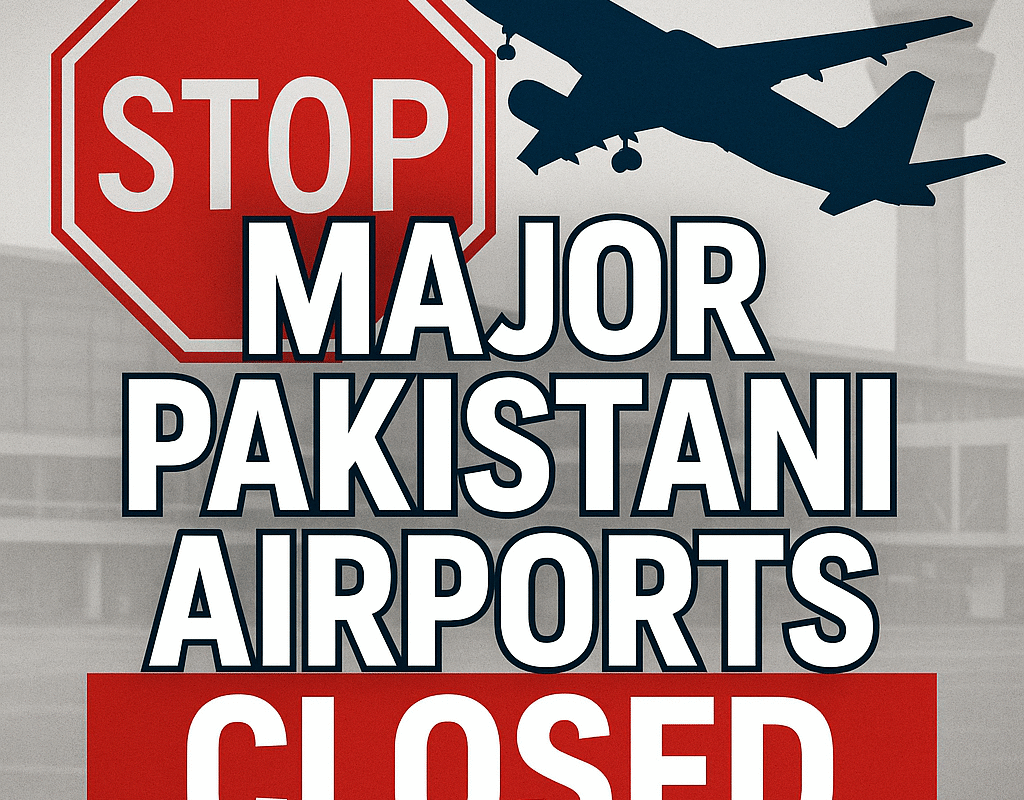Islamabad, May 7, 2025 – Pakistan’s aviation landscape is facing disruption as multiple major airports across the country have either been temporarily closed or are operating under restrictions. The closures have sparked concern among travelers and prompted questions about infrastructure, security readiness, and civil aviation strategy amid rising regional tensions.
✈️ Sialkot International Airport Shuts Down
One of Pakistan’s busiest private airports, Sialkot International Airport, officially closed operations from May 6 to May 18, 2025, citing urgent maintenance work. The Civil Aviation Authority confirmed that both domestic and international flights have been suspended during this period, affecting thousands of passengers.
Several airlines, including Pakistan International Airlines (PIA) and Emirates-affiliated carriers, have canceled or rerouted flights. Passengers have been advised to check with airlines for rebooking or refunds.
“Sialkot Airport plays a critical role for overseas Pakistanis and exports. Its temporary closure is a major inconvenience,” said a spokesperson for the Pakistan Civil Aviation Authority (CAA).
⚠️ Karachi and Lahore Airspace Partially Restricted
Although Karachi’s Jinnah International Airport and Lahore’s Allama Iqbal International Airport remain open, parts of their airspace are now partially closed from 4:00 AM to 8:00 AM daily, effective May 1 to May 31, 2025. The closures, noted in official NOTAM (Notice to Airmen) documents, stem from heightened security precautions, possibly due to the recent military tensions in the region.
At least a dozen PIA flights have faced delays or cancellations due to these airspace constraints.
🧪 Nawabshah Airport Closed for Geotechnical Study
In another development, Nawabshah Airport has suspended all fixed-wing operations until May 23, 2025 to facilitate a geotechnical survey. The study is part of a long-term infrastructure improvement project. Only helicopter movements are permitted during the shutdown.
🚫 10 Airports Non-Operational Nationwide
A deeper structural issue also looms. According to a recent Ministry of Defence report presented to the National Assembly, at least 10 airports across Pakistan are currently non-operational, some for decades. These include:
- Khuzdar, Muzaffarabad, and Rawalakot (closed since early 2000s)
- Parachinar, Omara, Sehwan Sharif, and Sibi
- Dera Ismail Khan, which has been inactive since 2021
These closures are attributed to ongoing security challenges, lack of funding, and regional instability, particularly in border and tribal areas.
🧭 The Broader Implications
These closures come at a time when Pakistan’s aviation sector is struggling to rebound from post-pandemic losses and faces increased scrutiny due to geopolitical tensions and infrastructure limitations.
Aviation experts warn that unless strategic investment is made in both airport modernization and air traffic control systems, the nation risks falling further behind in regional connectivity.
✈️ What Passengers Should Know
- Always confirm flight status directly with airlines before heading to the airport.
- Consider alternate routes through Islamabad or Multan, which remain fully operational.
- For international travelers, Islamabad and Karachi continue to function as primary gateways with only limited disruptions.
Conclusion:
While some closures are routine and scheduled, the growing list of inactive airports and restricted airspace paints a picture of a fragile civil aviation sector. With Pakistan’s economy and diaspora deeply connected through air travel, sustained attention to aviation reform is more critical now than ever.



